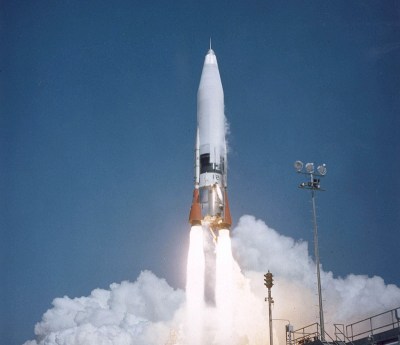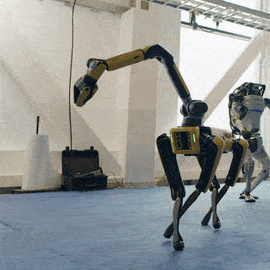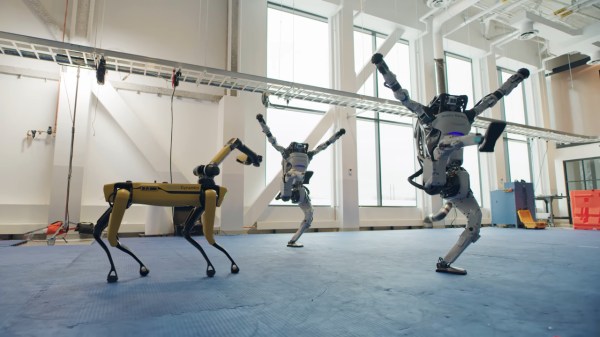The big news story of the week of course has been the wildfires in California, which as of Saturday have burned over 30,000 acres, destroyed 12,000 structures, caused 150,000 people to evacuate, and killed eleven people. Actually, calling them wildfires underplays the situation a bit because there are places where they’ve clearly become firestorms, burning intensely enough to create their own winds, consuming everything in their path in a horrific positive feedback loop. We’ve even seen fire tornados caught on video. We’ve got quite a few connections to the affected area, both personally and professionally, not least of which are all our Supplyframe colleagues in Pasadena, who are under immediate threat from the Eaton fire. We don’t know many details yet, but we’ve heard that some have lost homes. We’ve also got friends at the Jet Propulsion Labs, which closed a few days ago to all but emergency personnel. The fire doesn’t seem to have made it down the mountain yet, but it’s very close as of Saturday noon.
atlas14 Articles
Hackaday Links: November 3, 2024
“It was the best of times, it was the blurst of times?” Perhaps not anymore, if this Ig Nobel-worthy analysis of the infinite monkey theorem is to be believed. For the uninitiated, the idea is that if you had an infinite number of monkeys randomly typing on an infinite number of keyboards, eventually the complete works of Shakespeare or some other famous writer would appear. It’s always been meant to be taken figuratively as a demonstration of the power of time and randomness, but some people just can’t leave well enough alone. The research, which we hope was undertaken with tongue firmly planted in cheek, reveals that it would take longer than the amount of time left before the heat death of the universe for either a single monkey or even all 200,000 chimpanzees in the world today to type the 884,647 words of Shakespeare’s complete works in the proper order.
Hackaday Links: April 21, 2024
Do humanoid robots dream of electric retirement? Who knows, but maybe we can ask Boston Dynamics’ Atlas HD, which was officially retired this week. The humanoid robot, notable for its warehouse Parkour and sweet dance moves, never went into production, at least not as far as we know. Atlas always seemed like it was intended to be an R&D platform, to see what was possible for a humanoid robot, and in that way it had a heck of a career. But it’s probably a good thing that fleets of Atlas robots aren’t wandering around shop floors or serving drinks, especially given the number of hydraulic blowouts the robot suffered. That also seems to be one of the lessons Boston Dynamics learned, since Atlas’ younger, nimbler replacement is said to be all-electric. From the thumbnail, the new kid already seems pretty scarred and battered, so here’s hoping we get to see some all-electric robot fails soon.
Counting Down To The Final Atlas Rocket
The Atlas family of rockets have been a mainstay of America’s space program since the dawn of the Space Age, when unused SM-65 Atlas intercontinental ballistic missiles (ICBMs) were refurbished and assigned more peaceful pursuits. Rather than lobbing thermonuclear warheads towards the Soviets, these former weapons of war carried the first American astronauts into orbit, helped build the satellite constellations that our modern way of life depends on, and expanded our knowledge of the solar system and beyond.

Naturally, the Atlas V that’s flying today looks nothing like the squat stainless steel rocket that carried John Glenn to orbit in 1962. Aerospace technology has evolved by leaps and bounds over the last 60 years, but by carrying over the lessons learned from each generation, the modern Atlas has become one of the most reliable orbital boosters ever flown. Since its introduction in 2002, the Atlas V has maintained an impeccable 100% success rate over 85 missions.
But as they say, all good things must come to an end. After more than 600 launches, United Launch Alliance (ULA) has announced that the final mission to fly on an Atlas has been booked. Between now and the end of the decade, ULA will fly 28 more missions on this legendary booster. By the time the last one leaves the pad the company plans to have fully transitioned to their new Vulcan booster, with the first flights of this next-generation vehicle currently scheduled for 2022.
Hackaday Links: January 10, 2021
You know that feeling when your previously niche hobby goes mainstream, and suddenly you’re not interested in it anymore because it was once quirky and weird but now it’s trendy and all the newcomers are going to come in and ruin it? That just happened to retrocomputing. The article is pretty standard New York Times fare, and gives a bit of attention to the usual suspects of retrocomputing, like Amiga, Atari, and the Holy Grail search for an original Apple I. There’s little technically interesting in it, but we figured that we should probably note it since prices for retrocomputing gear are likely to go up soon. Buy ’em while you can.
Remember the video of the dancing Boston Dynamics robots? We actually had intended to cover that in Links last week, but Editor-in-Chief Mike Szczys beat us to the punch, in an article that garnered a host of surprisingly negative comments. Yes, we understand that this was just showboating, and that the robots were just following a set of preprogrammed routines. Some commenters derided that as not dancing, which we find confusing since human dancing is just following preprogrammed routines. Nevertheless, IEEE Spectrum had an interview this week with Boston Dynamics’ VP of Engineering talking about how the robot dance was put together. There’s a fair amount of doublespeak and couched terms, likely to protect BD’s intellectual property, but it’s still an interesting read. The take-home message is that despite some commenters’ assertions, the routines were apparently not just motion-captured from human dancers, but put together from a suite of moves Atlas, Spot, and Handle had already been trained on. That and the fact that BD worked with a human choreographer to work out the routines.
Looks like 2021 is already trying to give 2020 a run for its money, at least in the marketplace of crazy ideas. The story, released in Guitar World of all places, goes that some conspiracy-minded people in Italy started sharing around a schematic of what they purported to be the “5G chip” that’s supposedly included in the SARS-CoV-2 vaccine. The reason Guitar World picked it up is that eagle-eyed guitar gear collectors noticed that the schematic was actually that of the Boss MetalZone-2 effects pedal, complete with a section labeled “5G Freq.” That was apparently enough to trigger someone, and to ignore the op-amps, potentiometers, and 1/4″ phone jacks on the rest of the schematic. All of which would certainly smart going into the arm, no doubt, but seriously, if it could make us shred like this, we wouldn’t mind getting shot up with it.
Remember the first time you saw a Kindle with an e-ink display? The thing was amazing — the clarity and fine detail of the characters were unlike anything possible with an LCD or CRT display, and the fact that the display stayed on while the reader was off was a little mind-blowing at the time. Since then, e-ink technology has come considerably down market, commoditized to the point where they can be used for price tags on store shelves. But now it looks like they’re scaling up to desktop display sizes, with the announcement of a 25.3″ desktop e-ink monitor by Dasung. Dubbed the Paperlike 253, the 3200 x 1800 pixel display will be able to show 16 shades of gray with no backlighting. The videos of the monitor in action are pretty low resolution, so it’s hard to say what the refresh rate will be, but given the technology it’s going to be limited. This might be a great option as a second or third monitor for those who can work with the low refresh rate and don’t want an LCD monitor backlight blasting them in the face all day.
Boston Dynamics’ Dancing Bots Beg For Your Love A La Napoleon Dynamite
How do you get people to love you and sidestep existential fear of robots eclipsing humans as the solar system’s most advanced thinking machines? You put on a dance routine to the music of Berry Gordy.
 The video published by Boston Dynamics shows off a range of their advanced robots moving as if they were humans, greyhounds, and ostriches made of actual flesh. But of course they aren’t, which explains the safety barriers surrounding the dance floor and that lack of actual audio from the scene. After picking our jaws up off the floor we began to wonder what it sounds like in the room as the whine of motors must certainly be quite impressive — check out the Handle video from 2017 for an earful of that. We also wonder how long a dance-off of this magnitude can be maintained between battery swaps.
The video published by Boston Dynamics shows off a range of their advanced robots moving as if they were humans, greyhounds, and ostriches made of actual flesh. But of course they aren’t, which explains the safety barriers surrounding the dance floor and that lack of actual audio from the scene. After picking our jaws up off the floor we began to wonder what it sounds like in the room as the whine of motors must certainly be quite impressive — check out the Handle video from 2017 for an earful of that. We also wonder how long a dance-off of this magnitude can be maintained between battery swaps.
Anthropomorphism (or would it be canine-pomorphism?) is trending this year. We saw the Spot robot as part of a dance routine in an empty baseball stadium back in July. It’s a great marketing move, and this most recent volley from BD shows off some insane stunts like the en pointe work from the dog robot while the Atlas humanoids indulge in some one-footed yoga poses. Seeing this it’s easy to forget that these machines lack the innate compassion and empathy that save humans from injury when bumping into one another. While our robotic future looks bright, we’re not in a rush to share the dance floor anytime soon.
Still, it’s an incredible tribute to the state of the art in robotics — congratulations to the roboticists that have brought use here. Looking back eleven and a half years to the first time we covered these robots here on Hackaday, this seems more like CGI movie footage than real life. What’s more amazing? Hobby builds that are keeping up with this level of accomplishment.
Continue reading “Boston Dynamics’ Dancing Bots Beg For Your Love A La Napoleon Dynamite”
Hackaday Links: September 29, 2019
In a sure sign that we’ve arrived in the future, news from off-world is more interesting this week than Earth news. When the InSight probe landed on Mars last year, it placed the first operating magnetometer on the Red Planet. Since then, the sensitive instrument has been logging data about the planet’s magnetic field, and now there are reports that researchers have discovered a chain of pulsations in the magnetic field. Pulsations in planetary magnetic fields aren’t all that strange; pulse trains that occur only at Martian midnight are, though. Researchers haven’t got a clue yet about what this means. We assume they’ve eliminated artifacts like something on the lander being turned on at local midnight, so when they figure it out it should be fascinating.
In more news from the future, Boston Dynamics is trolling us again. We covered the announcement early this week that they’re putting their Spot quadruped robot on sale – sort of. Turns out you need to be selected to qualify based on the application you have in mind, plus have several Ferraris full of cash to spend. While everyone was watching the adorable antics of Spot as it wandered through improbably industrial vignettes, Boston Dynamics also released this slightly terrifying video of their Atlas robot running through a gymnastics routine. It starts with a headstand and a front roll and ends with a slipt leap and whatever the gymnastics equivalent of a figure skating axel jump is. Yes, it has a special roll cage attached to make the tumbles a bit smoother, but it’s still some remarkable stuff.
How are your RF design skills? If they’re good enough to design an RF power amp, you might want to check out this homebrew RF design challenge. Put on by NXP Semiconductors, the design must use one of their new LDMOS RF power transistors. They’ll send you samples so you can build your design, and you stand to win up to $3000 plus $1000 worth of NXP products. The contest opened back in May but is running through the middle of November, so you’d better hurry.
Speaking of RF, wouldn’t it be interesting to see a snapshot of the RF spectrum over the entire planet? ElectroSense thinks so, and they’re working on a crowdsourcing model to set up a globe-spanning network of connected RF sensors. The idea is similar to what FlightAware does for monitoring the locations of aircraft with a distributed network of ADS-B receivers. But where FlightAware only monitors a narrow slice of spectrum, ElectroSense wants it all – DC to 6 GHz. You can build a sensor from an SDR and a Raspberry Pi and start contributing to the effort, which only has a handful of sensors at the moment.
Has affordable metal 3D-printing finally arrived? For certain values of affordability, it soon will, when One Click Metal launches their new selective laser melting printer. Thomas Sanladerer did a video with the principals, and the prototype looks promising. SLM is not a new process, but patents on the core process recently ran out, so startups like One Click Metal are jumping into the market. Their printer won’t be cheap — you’ll still need to write a check with many zeroes — but with more players, the price should come down.
And finally, what’s this world coming to when a startup specializing in building giant fighting robots can’t make a go of it? MegaBots is shutting down, and while that’s certainly bad news for its founders and employees, it’s great news for anyone in the market for used battle bots. The company’s flagship bot, the 15-ton Eagle Prime, is currently up for auction on eBay. Bidding started at $1 with no reserve, but if you were looking for a steal, you’re a bit late. The high bid is currently $100,100, which is still an incredible buy considering it cost $2.5 million to build. You’ll have to pay for shipping, but you’ll have a super-destructive mecha of your own to drive around. And think how cool you’ll look rolling into some kid’s backyard birthday party. Presumably one you’ve been invited to.














